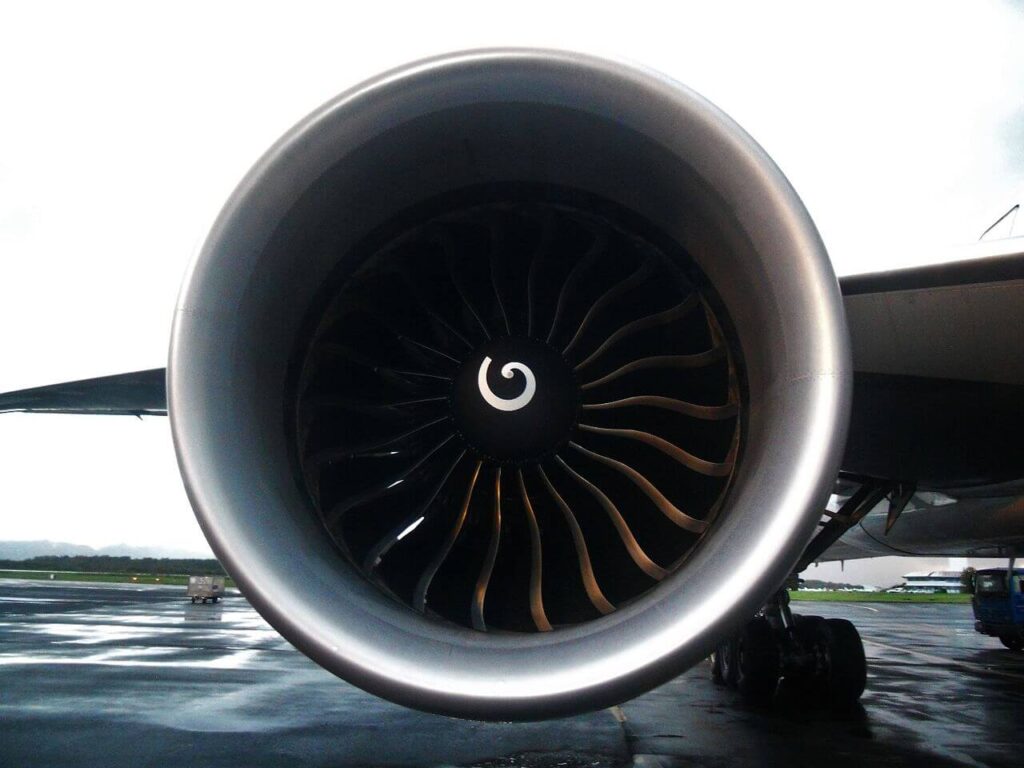The article was first published on January 25, 2019.
The debut of the biggest turbine engine in the world installed on the largest plane Boeing ever built is closer than you might think. Reports indicate the airframer has finally paired the gigantic GE9X engine with its highly anticipated 777X jet. The flight test plane is set to roll out next month showcasing its massive power plant.
GE Aviation, an operating unit of General Electric (GE), is building the GE9X exclusively for the latest version of Boeing’s long-haul wide-body 777 airliner. Launched in 2013, the GE9X program has recently passed key milestones in its extensive testing campaign, and appears to be on track to propel the 777X for its maiden flight.
In November 2018, Boeing announced it completed the “final body join” of the new 777X, connecting the nose, mid and aft sections to a 252 feet long (77 meters from nose to tail) giant airliner – the longest passenger jet the manufacturer has ever made.
Boeing revealed it had completed the first 777X ground test airplane in October 2018. At the time, the first flight test plane had also received its new CFRP (Carbon Fiber Reinforced Polymer) wing. And now, it appears the GE9X engine(s) has been installed on that 777X prototype, Popular Mechanics writes.
The plane, which has been housed in Boeing’s Everett, Washington assembly plant, is set to roll out in February and its first test flight is expected to take place later this year. The first delivery of the 777x – the 777-9 variant – is scheduled in 2020 with launch customer Emirates.
GE states it has 700 GE9X engines on order so far, with customers including Qatar Airways, ANA and Singapore Airlines (SIA1) (SINGY) . When it enters into service with the 777X, the GE9X, roughly the size of a 737’s fuselage, will be the largest commercial jet engine available.
Testing 1, 2, 3
The first full GE9X developmental engine was fired up for the first time in March 2016, kicking-off ground testing at GE Aviation’s Peebles Testing Operation (PTO) in Ohio, U.S., just six months after the engine design was finalized. Certification testing commenced in May 2017, marked by the firing of the second GE9X production-configured power plant at the PTO site.
A year later, in March 2018, the GE9X was taken airborne for its first flight test under the wing of GE Aviation’s 747-400 flying test bed in Victorville, California. Other completed tests included crosswind operability, high-pressure turbine stress, icing, emissions, and water ingestion.
With a total of eight engines involved in the certification program, GE states it now hopes to meet a 2019 target date for safety certification, later than initially hoped.
Big, Big and Bigger
According to GE, the GE9X engine will be the most fuel-efficient jet engine the company has ever produced on a per-pounds-of-thrust basis. The GE9X has been developed on the foundations of the GE90 (it is the fifth evolution of the GE90). That engine, developed back in the early 1990s, powers the Boeing 777.
Although the GE9X is the largest engine in the world, it is not the most powerful, yet. For instance, today’s GE90-115B, used on the 777-300ER, is the largest of the original GE90 variants, and is rated for over 115,000 pounds of thrust.
To date, the GE90-115B holds the title of the world’s most powerful engine at 127,900 pounds of thrust (originally, the GE90 was designed for a 76,000-pound thrust requirement). The GE9X, meanwhile, classifies in the 100,000 pound thrust category.
Bigger engines potentially mean higher fuel consumption and associated costs. The manufacturer states, however, that compared to the GE90-115B, the GE9X will be capable of delivering 10% improved fuel burn; it will also have a 5% improved specific fuel consumption compared to any twin-aisle engine currently out there.
But what surely stands out the most is that the largest jet engine will have the largest front fan: the power plant will have a composite fan case measuring at over 11 feet (approx. 3.40 meters) in diameter and (only 16) fourth generation carbon fiber composite fan blades.
The GE9X is designed to achieve an approximate bypass ratio of 10:1 and an overall pressure ratio of 60:1. The power plant features a next-generation 27:1 pressure-ratio 11-stage high-pressure compressor; a third-generation TAPS III (twin-annular pre-mixing swirler) combustor for high efficiency and low emissions; and CMC (ceramic matrix composite) material in the combustor and turbine.
* In the main photo: GE90

